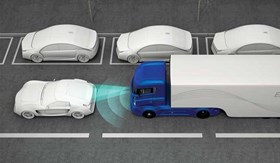Operation Safe Driver Set for July 13-19, 2025
As in past years, Operation Safe Driver Week 2025 will focus on one of the most dangerous threats on our roadways: reckless, careless, and dangerous driving behaviors.

Four years from now a new truck may come equipped with automatic emergency braking (AEB) and electronic stability control (ESC) technologies. A joint rulemaking proposal from the National Highway Traffic Safety Administration (NHTSA) and the Federal Motor Carrier Safety Administration (FMCSA), if adopted, would require those two safety technologies on all newly manufactured trucks over 10,000 pounds beginning three or four model years after the rule is final.
NHTSA’s role is to regulate automotive and truck equipment safety standards while FMCSA regulates motor carrier operational safety. Today, trucks in Classes 7 and 8 (those over 26,000 pounds) are already required to have ESC.
AEB utilizes cameras and radar to detect stopped or slower vehicles in the path of a truck, sends a visual and auditory alert to the truck driver, and automatically applies the truck brakes. If the truck driver manually brakes, AEB would supplement the driver’s effort as needed. ESC, on the other hand, monitors and balances individual braking and engine torque to reduce potential rollover and swerving. Together, the proposal predicts, these technologies will prevent 19,118 crashes each year, including 5,691 crashes involving heavy trucks, and save 155 lives annually.
NHTSA recently issued a similar proposed rule for passenger cars. While AEB and ESC are not 100% effective in every crash scenario, NHTSA and FMCSA say the passenger car and truck regulations will still reduce overall fatalities, injuries and property damage even where a rear-end collision is not completely avoided. That, though, should be a reminder to all motor carriers and professional drivers: so-called “advanced driver assistance safety” (ADAS) technologies are there to “assist” the driver and are never a substitute for truck driver awareness and judgment.
The rulemaking does not propose retrofitting existing trucks for AEB or ESC. Comments on the NHTSA/FMCSA proposal are due by September 5, 2023. Read the full proposal here.
As in past years, Operation Safe Driver Week 2025 will focus on one of the most dangerous threats on our roadways: reckless, careless, and dangerous driving behaviors.
Late last month, FMCSA posted on its website a list of suggestions to use during the driver qualification process to determine how well a CDL driver meets the English proficiency standards.
Article written by Douglas B. Marcello, originally published by Saxton & Stump. Gives information about blown tires, lost treads, and other tips on liability related to tires.